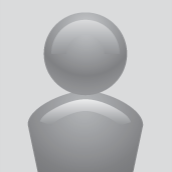My Videos
The addition of a tablet binder is crucial since it helps to keep fillers and powders in one place. Fillers do not have good binding capabilities as well, so the binder acts as a glue. Binders come in solid or liquid form and can create a matrix when mixed with fillers and powders. The most popular binder is the one that is wet because it is the most water-soluble. Both the liquid and solid binder types have the same function, keeping the particles in place.
Starch
A biodegradable plastic starch has received a lot of attention in recent years. This versatile substance is used in a variety of ways, for example, as a diluent or disintegrant. A common binder for tablets is fresh starch paste. It is found in concentrations ranging from 5 to 15 percent. Starch has also been studied in novel contexts, including periodontal and nasal drug delivery methods. These novel applications often require modification of existing starches or new sources.
Look at this website to discover extra resources on colored pill binder.
Pregelatinized starch
A binder is an essential ingredient in tablet formulation. It imparts cohesiveness, plasticity, and inter-particulate bonding strength to the finished product. Binders are added in dry or granulating liquid forms. When the process is dry the binders are put in to form either a powder or liquid solution. The solid binder is then added to form a glue-like compound. The most well-known method is called wet granulation. Binders are typically hydrophilic, which means they are water soluble.
Lactose filler
There are many types of lactose that could be used in tablet formulation. Spray-dried lactose (SDL) is a good option due to its superior density and high flowability. It is low friability, and a high release of drug however, it is less stable under humid conditions. Anhydrous lactose can be found more frequently in direct compression formulations due to its stability and binding but it is not able to flow.
Synthetic binding agents
In a recent article that was published in the journal Int Res J Pharm, researchers examined the effectiveness of natural and synthetic binding agents for tablet formulation. Synthetic binders, while natural ingredients have been used for centuries, are still relatively new. Synthetic binders can have adverse results, like the increase in cost and the degree of hardness tablet and other undesirable effects. While there are many benefits to natural ingredients,, synthetic binders in tablet formulation are not a viable replacement.
Glidants
The addition of binding agents to a tablet formula is a multi-faceted process. For example bulking agents can increase the weight of tablets. They enhance the flow properties of a tablet while minimizing the potential for the particles to segregate. The quantity of binders that are included in tablet formulations will depend on the type and shape of the tablet.


